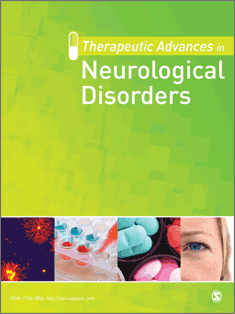Hemorrhagic complications after stroke treatment with intravenous thrombolysis despite use of direct oral anticoagulants: an observational study.
IF 4.7
2区 医学
Q1 CLINICAL NEUROLOGY
引用次数: 0
Abstract
Background For patients experiencing ischemic stroke despite receiving therapy with direct oral anticoagulants (DOAC) and without endovascular treatment options, therapeutic prospects are currently dismal. Current guidelines recommend intravenous thrombolysis (IVT) only for patients who have received DOAC in very restricted settings, as an increased risk of bleeding is suspected. However, recent retrospective observational studies suggest that IVT is safe despite DOAC pretreatment. Objectives To provide further evidence that IVT despite previous DOAC treatment is not associated with an increased risk of bleeding. Design Observational retrospective study. Methods Demographic, clinical, and radiological data of patients who received IVT (+/- endovascular thrombectomy) despite DOAC pretreatment between June 2021 and January 2024 were analyzed using descriptive statistics, including DOAC plasma concentration at admission. Secondary intracranial hemorrhages and functional outcomes at 3 months were assessed. Since 2023, patients have been treated according to a modified local standard operating procedure at our hospital, allowing for IVT despite DOAC pretreatment regardless of DOAC plasma levels or the use of reversal agents. Results Of 1821 patients treated with acute recanalization procedures during the study period, N = 35 had received IVT with (18) or without (17) additional endovascular therapy. Among these patients with a wide age range (42-97 years) and DOAC plasma concentrations up to 369 ng/ml, only one developed symptomatic intracranial hemorrhage. A favorable outcome (modified Rankin scale score 0-2) after 3 months was observed in 57% (20) of the patients. Conclusion IVT despite direct oral anticoagulation seems to be safe, even at advanced age and high DOAC plasma levels.使用直接口服抗凝剂静脉溶栓治疗脑卒中后的出血并发症:一项观察性研究。
背景对于接受直接口服抗凝剂(DOAC)治疗后仍发生缺血性脑卒中且无血管内治疗选择的患者,目前的治疗前景不容乐观。目前的指南建议,只有在非常有限的情况下接受 DOAC 治疗的患者才可进行静脉溶栓(IVT),因为怀疑会增加出血风险。目的 进一步证明既往接受过 DOAC 治疗的患者接受 IVT 不会增加出血风险。方法 采用描述性统计方法分析 2021 年 6 月至 2024 年 1 月期间既往接受过 DOAC 治疗但仍接受 IVT(+/-血管内血栓切除术)的患者的人口统计学、临床和放射学数据,包括入院时的 DOAC 血浆浓度。对继发性颅内出血和 3 个月后的功能预后进行了评估。自2023年起,患者按照本院修改后的当地标准操作流程接受治疗,尽管进行了DOAC预处理,但仍可进行IVT,而不论DOAC血浆浓度或逆转剂的使用情况。结果在研究期间接受急性再通术治疗的1821名患者中,有35人接受了IVT,其中18人接受了或未接受(17人)额外的血管内治疗。这些患者年龄跨度较大(42-97 岁),DOAC 血浆浓度最高达 369 ng/ml,其中只有一人出现了无症状性颅内出血。结论 即使是高龄和 DOAC 血浆浓度较高的患者,在直接口服抗凝药的情况下进行 IVT 似乎也是安全的。
本文章由计算机程序翻译,如有差异,请以英文原文为准。
求助全文
约1分钟内获得全文
求助全文
来源期刊

Therapeutic Advances in Neurological Disorders
CLINICAL NEUROLOGY-
CiteScore
8.30
自引率
1.70%
发文量
62
审稿时长
15 weeks
期刊介绍:
Therapeutic Advances in Neurological Disorders is a peer-reviewed, open access journal delivering the highest quality articles, reviews, and scholarly comment on pioneering efforts and innovative studies across all areas of neurology. The journal has a strong clinical and pharmacological focus and is aimed at clinicians and researchers in neurology, providing a forum in print and online for publishing the highest quality articles in this area.
 求助内容:
求助内容: 应助结果提醒方式:
应助结果提醒方式:


